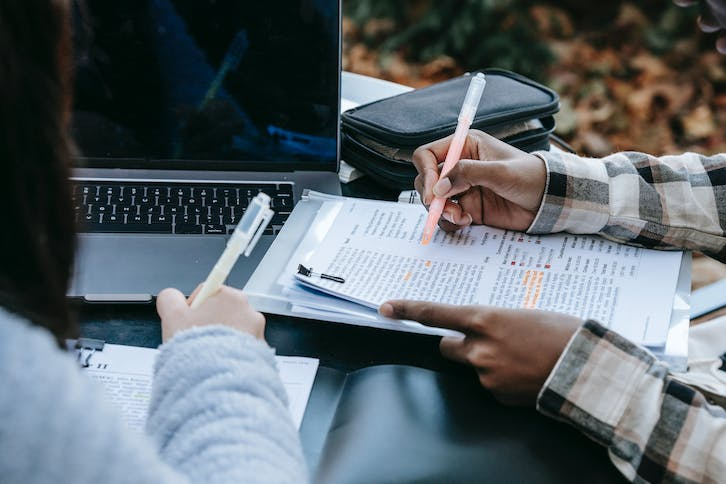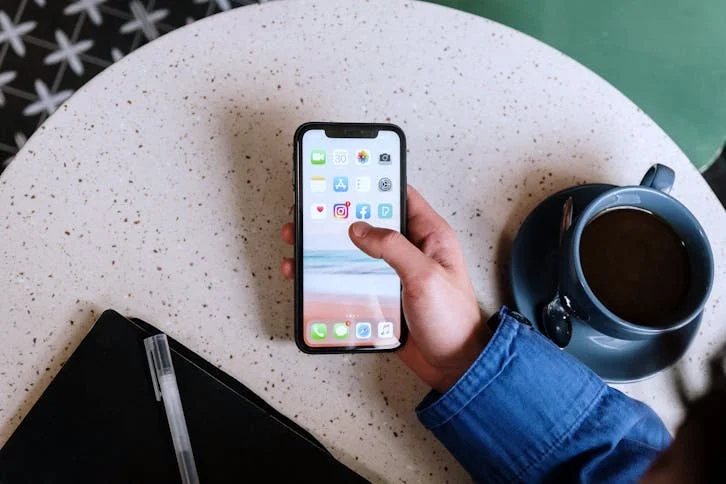
How to avoid plagiarism and write a quality paper
Plagiarism is using someone else's ideas, words, or works without proper permission and acknowledgment of the source. Some students get away with it, claiming lack of time or simply unwillingness.
What is plagiarism, and what are the consequences of it? It causes incredible damage to the academic environment, so it must be addressed. Preserving the integrity and maintaining the intellectual property is essential. You've probably heard of academic integrity guidelines; that's what they are. In a professional environment, it's about maintaining the reputation and trust of employees and clients.
Next, let's discuss plagiarism and how to avoid it. Since it can occur unintentionally, we’ll reveal the best ways and plagiarism prevention techniques to minimize the risks. We will also look at the tools that will significantly help you with any scientific work. Let's go.

Plagiarism: types, consequences, and misunderstandings
Having understood the meaning, let's move on to the types. Here they are:
- Direct: It’s complete plagiarism because the author presents the words of others as their own. Usually, it’s specific sections or paragraphs, but not the whole work. No references, mentions, citations, etc. An example is copy pastes. You go to another website and transfer it to your document without any changes.
- Self-plagiarism: The type of plagiarism in which you use your previously published materials without properly acknowledging this fact. This includes reusing whole or partial text passages, ideas, data, or concepts. For example, you’ve written a scientific article for one journal and used it in your next article for another journal. Again, no references or mentions of this. Worst of all, you submit the same research to conferences or journals under different titles but with the same content.
- Mosaic: The author uses parts of the text from different sources, and the name “mosaic” perfectly reflects this. The main signs include using phrases, sentences, or paragraphs directly from other sources without providing citations or references, rewriting the text, changing it slightly, or simply paraphrasing it. This can give the impression that all ideas and facts are unique, but it’s easy to detect with the tool.
- Accidental: A person uses ideas, texts, or information without realizing it. Research is essential for any work. Some thoughts get stuck in your head, and you think they are yours. In fact, you have already seen them. There’s also room for coincidence. However, since it is impossible to prove whether the author intended to borrow, it’s still considered plagiarism and is not exempt from liability.
Now, to the plagiarism consequences. On the academic side, this means losing points or being expelled. The first time, you can get away with a warning, but not if you repeat it. In addition, teachers and fellow students lose trust in you as a student or researcher.
The situation can become even more severe, leading to legal action. As a result, hefty fines can be imposed, as researchers are very protective of their intellectual property. Some plagiarists are blacklisted, which affects further studies and employment.
In terms of ethics, plagiarism contradicts scientific integrity and damages professional reputation. Investing in independent work and honesty is always better than taking such a risk.
There’s a widespread belief that plagiarism is only the complete copying of a text or idea. In reality, it also includes tiny text fragments and paraphrasing, as in mosaic type. Another misconception is that plagiarism is permissible without direct intent to cheat. However, it’s punishable in the same way.
Practical techniques to avoid plagiarism
How to avoid plagiarism? An essay rewriter isn’t the only way. The magic wand is high-quality paraphrasing. This means that you put someone else's text in your own words, preserving its meaning and ideas, but without completely copying it. Before you start, read the original text carefully and understand its concepts and main points. Use your own words and phrases to express the same ideas, avoiding plagiarism. Also, simply replace words from the original text with synonyms. Change the word order and sentence structure. It’s best to use several sources at once.
But don't rush to submit; it's the turn of the proper citation methods. Use APA, MLA, Chicago, or Harvard, depending on the subject. Let's take a quick look at each:
-
APA (American Psychological Association):
- Used in psychology, education, sociology, and behavioral sciences.
- It features a specific author-date system, usually in parentheses. The list of references is organized alphabetically by the author's last name. -
MLA (Modern Language Association):
- Often in the humanities, such as literature, linguistics, and art history.
- This style also uses the author-date system, but usually without parentheses. The author and page information is given in the text and then listed in detail alphabetically at the end of the work. -
Chicago Style:
- It is used in many fields, including history, art history, and communication science.
- It has two central systems: notes and bibliography. When citing, numerical notes indicate the source and detailed information about these sources is given in the bibliography. -
Harvard Style:
- It is used in many areas of academic research, especially in scholarly articles and publications.
- The Harvard system uses author-date in the text but also requires a detailed list of references in alphabetical order at the end of the document.
Cite any ideas, texts, or data that are not your own. Also, clearly indicate the source of the information, for example, in the format of book title, year, and page.
Lastly, the old-fashioned anti-plagiarism tools are also great for avoiding plagiarism in writing. Use them effectively, and there will be no problems. Run the text after the grammar check and before submitting it. Get the results and analyze what was identified as plagiarism. If these are quoted passages, ignore them. Everything else needs to be corrected by rewording or citing sources. Use several plagiarism detection tools to be sure.
Practices to improve results
It's not enough to know how to avoid plagiarism; you must practice it. First, we learn how to search for information. This is a must because you need to back up your words with evidence, facts, figures, etc. But don't borrow from someone else. Identify your needs. Think about what aspects of the topic you are interested in. What problem do you want to solve?
Use the Internet, books, scholarly articles, magazines, databases, industry experts, and more. Diversity provides different perspectives and deeper understanding. Next, evaluate the source for quality and relevance. Now, you have the knowledge that you can apply in your work.
In addition, we recommend synthesizing information from different sources. That is, combining ideas, data, and arguments to create a coherent and convincing argument or conclusion. Here are a few steps on how to do this:
- Analyze the sources. Before you start synthesizing, look at each source in detail and understand the main ideas, arguments, and evidence it presents.
- Identify common themes. Look for common concepts or ideas between different sources. This may include similar views, trends, problems, or solutions.
- Compare and contrast. Determine how they are similar or different and why.
- Making connections. Connect different ideas and facts to build a coherent argument or conclusion. Show how information from various sources supports your position or thesis.
- Developing new ideas. Use the synthesized information to analyze the problem from a new perspective. Consider how you can use knowledge from different sources to reach your own conclusions.
- Creating a coherent text. Write an explanation of your argument or conclusion using the information you synthesized. Use logical connections and arguments to support your position.
For even more logic and coherence, use signal phrases, especially when you want to introduce a new argument or add information. For example, you can start a new paragraph or section with “In addition” or “On the other hand.” To attribute information that is not your own opinions or research, use “According to a study,” “According to the author,” or “According to experts.”
Signal phrases help the reader understand when you are using information from other sources and provide a clear structure to the text. They also add professionalism by showing that you use reputable sources and know how to argue your points.
But how do you know how to cite sources properly and when to do so? Here are the main situations:
- Direct use of words or phrases from the original. They should be enclosed in quotation marks, indicating the author and source.
- Using ideas, concepts, or data from another source. In this case, leave a link with the full name and year of publication in the reference.
- Reuse your material. Indicate this by quoting or referencing.
See more details about the integration and ethical writing practices in the table below.
| Quoting | Use direct quotes to translate an opinion or proof from a source accurately. Include the author's name, year of publication, and page number. |
| Paraphrasing | Paraphrase ideas from other sources in your own words. Acknowledge the source by citing the author and year of publication. |
| Combine quotes and paraphrases | Mix it to support your point. Remember to adequately credit sources when doing so. |
| References | Include a list of references in your text or at the end of your paper according to the formatting requirements (e.g., APA, MLA, etc.). |
Avoid plagiarism with these tools
You can't avoid plagiarism without additional tools; they literally tell you how to avoid plagiarism. Every commission uses them, regardless of the topic and scientific essay format. Teachers also do it regularly to identify violators. Therefore, it’s better to ensure you’ve not plagiarized anything in advance by using these tools yourself. Answering “How can you avoid plagiarism?”, let's look at the most popular apps:
- Grammarly: You probably know this guy as the grammar and punctuation assistant. The tool provides recommendations on how to use different writing styles, avoid tautology, and emphasize the text's strengths. Corrections ensure clarity and accuracy. Conveniently, Grammarly provides several correction options for each error; choose the most appropriate one. However, it also has a unique check; borrowed sentences are highlighted differently. The tool is available as a browser extension and integrates with programs such as Microsoft Word, Google Docs, and more.
- Copyscape: This tool also checks your text on the Internet to detect copying. Copyscape provides a detailed report of any matches found, allowing you to see other sources and take action if necessary. The tool is fast enough to detect plagiarism in a large amount of text in a few seconds. Plus, it has an API that allows you to integrate its functionality into your own apps or websites.
But if you want to make creating a bibliography easier, use Zotero, EndNote, and Mendeley. They automatically generate references and format them according to different citation styles, avoiding plagiarism.
In more detail, Zotero is a free source manager. You’ll see a convenient browser-based application for collecting information from the Internet, the ability to organize sources into different categories and tags, and the ability to automatically generate bibliographies in various formats such as APA, MLA, Chicago, etc.
EndNote is paid, but it has more features. These are the ability to import and organize a variety of sources, including books, magazines, web pages, etc., the automatic generation of bibliographies following different citation styles, and the ability to collaborate and share sources with other users.
Mendeley combines the functions of a source manager and a social network for researchers. Features include organizing and annotating sources, creating groups for collaboration, automatic synchronization between different devices, and the ability to search and add new sources from online databases.
Plus, remember to go to online labs like Purdue OWL or the Writing Center. There, you’ll find tips on academic writing, formatting, and citation. These resources provide samples, explanations, and exercises to improve writing skills. The Writing Center also often offers one-on-one tutoring and workshops to improve your writing skills. Don't miss this opportunity to get help from experienced tutors and writing specialists. Plus, you'll find interactive exercises and tests that help you consolidate your knowledge and skills and assess your understanding. What's great is that the resources are designed for different audiences. We're talking students, teachers, researchers, and professionals; everyone needs to improve their writing skills occasionally. These are the right strategies to prevent plagiarism.
Ethical standards and why it matters
You might wonder why we need this integrity if we can save time and effort instead. Well, we’ve already mentioned the consequences of this, but that's not all. Students who work on assignments independently develop their critical thinking skills and independence. This way, you understand the material better and achieve more.
Being an honest and conscientious worker is essential in many professions. It all starts at university. You also contribute to the scientific community by doing your work and citing sources. Of course, if you remember to avoid plagiarism.
If it's a team effort, assign responsibilities. When everyone on the team understands who is responsible for what and what they should do, the work gets done faster and more efficiently. You've probably found yourself in a situation where you're constantly passing the buck. As a result, the deadline is burning, and the stress is increasing every minute.
Identify each participant's strengths. For example, one analyzes and collects information while the other writes the text. This will also bring pleasure. Can you ask for more information from a scientific study? Plus, you’ll avoid conflicts and misunderstandings.
Authorship in collaborative projects works as follows: all team members have the right to have their contributions recognized. Everyone is listed as a co-author, indicating who was responsible for what.
Respect for intellectual property rights also means recognizing and supporting creative contributions. In this way, we support scientific activity and stimulate further innovation and development. Protecting intellectual property rights contributes to the flourishing of culture and science. Authors and inventors are duly recognized and rewarded for their work, so you avoid plagiarism, not only for your own good.
FAQ
What is considered plagiarism?
What is plagiarism? Plagiarism is using someone else's ideas, words, or works without proper permission or acknowledgment of the source. For example, copying a text without giving credit to the source. It also includes coincidences with the work of others detected by an anti-plagiarism tool.
How can I avoid accidental plagiarism?
It is important to cite sources correctly, indicating the authors and sources of information to avoid accidental plagiarism. Also, use the correct formatting for citations and references. Above, we’ve described more ways how to avoid plagiarism and stay away from problems.
Is self-plagiarism a serious offense?
This can be a severe violation, especially in the scientific field, where honesty and openness are critical. Reusing your work without acknowledging it is considered unacceptable.
Do I need to cite common knowledge?
Usually, it’s unnecessary, but it's better to do so if this information is not apparent or controversial. This way, you’ll support your statements and show the reader their credibility, avoiding plagiarism.
In conclusion
The main thing to avoid plagiarism is not to be lazy and to search for information properly. This includes using various sources, best practices for citing sources, and a list of references. To avoid getting into trouble, check your texts with tools and correct borrowed parts. Adherence to academic integrity is a manifestation of respect for oneself and others.
Apply this knowledge to your writing. Remember that honesty and adherence to ethical standards are the keys to success as a student and future professional, so avoid plagiarism at all costs. Develop as a writer without plagiarism!



Comments (0)
Thank you for your comment! 🌟
It has been submitted and is awaiting moderation. Stay tuned—it will be visible soon!